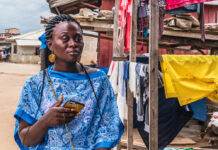New research on the suicidal acts of young women in Sri Lanka highlights how embedded suicidal acts are in a specific historical and cultural experience and how fear, shame, and social exclusion can contribute to suicidality.
Sri Lanka had the world’s highest successful suicide rate until rates declined rapidly in the late 2000s due partly to the restriction of lethal agrochemicals. However, nonlethal suicide attempts and intentional instances of self-harm remain high and are increasing across the island, particularly amongst girls and young women in rural areas.
In a new study, Jeanne Marecek, Professor of Psychology at Swarthmore College, and Sri Lankan Psychiatrist Chandanie Senadheera investigate the emergence of this trend. Their article, published in the International Journal of Environmental Research and Public Health, discusses the role of ‘læjja-baya,’ which translated into English means’ shame-fear,’ in the non-fatal suicide attempts of young girls and women across Sri Lanka.
The authors write:
“This article concerns a cultural setting in which the canonical narrative of suicide does not link it to clinical depression or any other mental disorder. This setting is Sri Lanka, a small island nation off the southeastern coast of India. There, the everyday understanding of suicidal acts is that those acts are driven by anger, the desire to cast blame and shame on another person, or a wish to “scare” others into doing one’s bidding. Such acts (or threats of such acts) are quite common among both women and men and across the age span from mid-adolescence to old age. Neither psychiatrists, medical personnel, family members, nor individuals who have engaged in suicidal acts regard such acts as symptomatic of mental disorders. Following a suicidal act, individuals are typically admitted to medical wards; their physical symptoms are treated, and they are discharged. Especially if they are young, they may be deemed as “foolish,” “hotheaded,” or “uneducated”—bad but not mad.”
 In Galle, a small rural town in the southwest of Sri Lanka, the authors conducted semi-structured interviews with 22 young girls and their mothers after their treatment for a suicidal act. All the girls were from Sinhala families, and all the interviews were conducted in Sinhala. The interviews were recorded, transcribed, and translated into English for further analysis.
In Galle, a small rural town in the southwest of Sri Lanka, the authors conducted semi-structured interviews with 22 young girls and their mothers after their treatment for a suicidal act. All the girls were from Sinhala families, and all the interviews were conducted in Sinhala. The interviews were recorded, transcribed, and translated into English for further analysis.
“The descriptions that daughters and mothers gave of the girls’ suicidal acts included several features that set these acts apart from both completed suicides or attempted suicides. Most girls described their actions as largely unpremeditated. Sixty-five percent of them reported that they contemplated their suicidal act for 30 min or less,” the authors write.
“For the most part, the girls made minimal efforts (if any) to conceal what they had done. Some left empty pill bottles or empty cards of Paracetamol tablets in plain sight… Many girls very soon disclosed to their mothers what they had done. In a few cases, such as the two that follow, girls dramatically enacted the self-harming act in others’ presence.”
What is unique about the suicidal acts of these young women is the antecedent or instigation of the self-harming/suicidal behavior. Instead of being understood as mental illness, distress, or crisis, the acts are seen as catalyzed by interpersonal conflict. Specifically, the girls’ suicide act was fueled by the desire to provoke change in or punish another person for bringing them shame and fear, not to end their life.
The interpersonal conflicts were associated with the girls’ personal and familial reputation and respect. Experiences of interpersonal conflict varied widely, but all instances included an affront to the promise to be a good and respectable wife. Frequently, these affronts included accusations of connections with boys, promiscuity, and sex before marriage.
For example:
“Anu (age 15) was the only girl in her family. She had five brothers. On the way home from school, she said, ‘A boy came after me and spoke to me. A relation of ours saw it. I got afraid because I knew he would tell my brothers. I rushed home and swallowed ten tablets of Panadol [the local brand of Paracetamol] [ . . . ] My brother would have scolded me, but he won’t scold me now.'”
Or:
“Chalini (age 18) ingested a mixture of kerosene oil and crushed mosquito coils (i.e., coils soaked in mosquito repellent, which are burned in order to repel mosquitoes). Chalini had been forced to leave school to take up a job to support her family after her father’s unexpected death. A girlfriend found her a job in a garment factory. The factory was some distance from Chalini’s home, so she arranged to board with the girlfriend’s family. Within a few weeks of starting the job, however, Chalini’s younger brother accused her of having an affair with a boy in the household. Her older brother forcibly dragged her back home. When Chalini disputed the accusation, both brothers, she said, ‘physically assaulted’ her. In response, she swallowed the poison she had concocted. In the hospital, Chalini said, ‘I felt sad, and I drank poison.'”
The girls’ mothers were also asked to describe their understanding of their daughters’ suicidal acts. Each mother expressed little to no interest in why their daughter had poisoned themselves, interpreting the acts as disobedience and frequently punishing the girls or knowing that their male family members punished and abused the girls after they were out of the hospital.
One mother said:
“‘ I know she will be beaten when she gets home. They are in a fury, and I fear their rage.’ Another mother said: ‘Father plans to beat the girl when she gets home. I have to find a way around that.’ According to many mothers, fathers, and elder brothers assumed that the girl’s suicidal act was proof that she had lost her virginity. The plans men entertained for rectifying this were quite extreme.”
During follow-up interviews, Marecek and Senadheera found that after the hospitalization for the suicide act, the young girls frequently experienced a kind of social exclusion that only harmed their reputation as respectable. ‘Læjja-baya’ incentivized their family members to hide them from public view to avoid further shame and damage to familial respectability and to ensure that the girl does not ‘contaminate’ other girls in the area.
The authors end with this note:
“We remind readers that in Sri Lanka, the canonical narrative of suicide holds suicidal acts to be caused by anger and a desire for revenge, not by mental disorder… Some readers may believe that suicidal individuals in Sri Lanka ought to be given the psychiatric diagnoses conventionally given to suicidal individuals in Western countries. We disagree… receiving such a diagnosis likely would be detrimental. There is a lasting stigma associated with being labeled as being pissu (crazy) or as having a manasika rogaya (disease of the mind). Such labels incur a stigma for both patient and family. It is for this reason that many families shun services offered under the auspices of psychiatry.”
Sri Lankan and other majority-world suicidal acts challenge the minority world’s view and understanding of suicidality, pushing us to re-imagine why someone self-harms or attempts suicide. Mental distress may contribute to suicidality, but so are social exclusion and ostracization, frequently founded in oppression. Suppose mental health professionals categorize, label, and pathologize these suicidal acts. In that case, they may fail to understand the context-dependent drivers that motivate them, only exacerbating the problem and causing epistemic harm and violence.
****
Marecek, J., & Senadheera, C. (2023). Gendered Antecedents and Consequences of Young Women’s Suicidal Acts in Sri Lanka. International Journal of Environmental Research and Public Health, 20(4), 2885. (Link)















Removed for moderation.
Report comment
I’ve just seen two Hamlets, and Ophelia gets the same treatment, which was shown clearly in Branagh’s version. As to whether she would be put in concentrated ground. Evidently there’s some ectoplasm emitting out of the remains of those committing suicide, and this would expose how the Heaven the church teaches is something they can’t reach themselves, and people who had every right to go beyond such limitations, and the actual nerve, they are turned into some magic of what isn’t them anymore, and wasn’t to begin with.
I don’t think the feelings of not wanting to be contained by such evil as most of such “religions” or “society,” or the rest, I don’t think that’s a disease. It’s just that those making it out to be a disease, ARE NOT going to be the ones pointing out what’s beyond, and here on this planet, and what really healing is.
I went to see a healer, they say is impossible. A Filipino. And I knew there were the amount of years added to my life, as psychiatric drugs normally take off. And then even, I found out about love. I had the same opening into the fourth dimension, where there’s no distance, only perhaps what might be called themes, like give fiction body. My fingers did exactly what the Filipino healers do, only no blood. When I woke up out of this dimension, it was the same as having eaten a strawberry. Because to me its like being in love, and you like being dizzy. The sanctuary that is, a place to rest. But now, love really is what is given to those that need healing. It’s really not some romantic indulgence.
There are places to go, not having the limitations of the SAME PEOPLE calling suicidal thoughts a disease. They exist. They do. Really.
Report comment